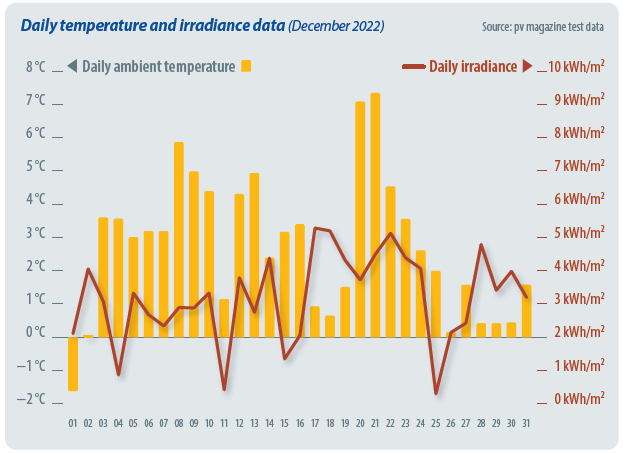pv magazine test: July 2024 Results
By George Touloupas
This article was originally published in pv magazine – September 2024 edition. Learn more about the pv magazine test here.
George Touloupas, Senior Sirector of Technology and Quality at Clean Energy Associates, analyzes the July 2024 results from the pv magazine test outdoor installation in Xi’an, China.
The recently installed product from SolarSpace has its first full month of data available. Due to work on the installation, the system was disconnected and three days of data are excluded. The first chart shows the meteo station data (irradiance and ambient temperature) for July 2024.
Figure 1: Daily temperature and irradiance data - July 2024
The average bifacial boost is 9.34% for July 2024. Bifacial boost is defined as the relative advantage of all bifacial products compared to the average specific energy yield of all monofacial PERC products. The newly installed TOPCon products that performed well in June remain at the top rank. The new SolarSpace product also performed well, reaching the second rank, which resulted in a higher bifacial boost for TOPCon than HJT, which is only represented by two products. As noted in the previous month’s article, more HJT products are needed to be studied over time to draw conclusions.
Table 1: Bifacial boost - April 2024 to July 2024
Table 2: Specific energy-yield ranking of n-type bifacial (TOPCon and HJT) modules - July 2024
Table 3: Specific energy-yield ranking of bifacial PERC modules - July 2024
Table 4: Specific energy-yield ranking of monofacial modules - July 2024
Energy yield measurements
The energy yield comparison among various technologies, including bifacial boost, is analyzed using products installed after the beginning of 2019.
The energy yield is given in Wh/Wp and calculated by dividing the energy produced by the module by the Pmax at STC of the module. This Pmax is the maximum STC power after a process of stabilization.
The results are grouped into categories, per solar module type.
The bifacial boost depends on a number of parameters: the bifaciality factor, the installation geometry, the albedo of the ground, the sun angle, and diffuse irradiance. The ground in this case is gray
Figure 2: Specific energy yield of n-type bifacial (TOPCon and HJT), bifacial PERC, and monofacial modules - July 2024
Figure 3: Relative yield of different technologies - July 2024
Test cooperation
pv magazine test is a cooperative effort involving pv magazine, CEA, Gsola and Hoymiles. All testing procedures are carried out at Gsolar’s test laboratory in Xi’an, China. CEA supervises these tests and designed both the indoor and outdoor testing procedures.


































